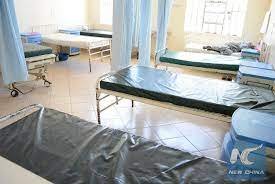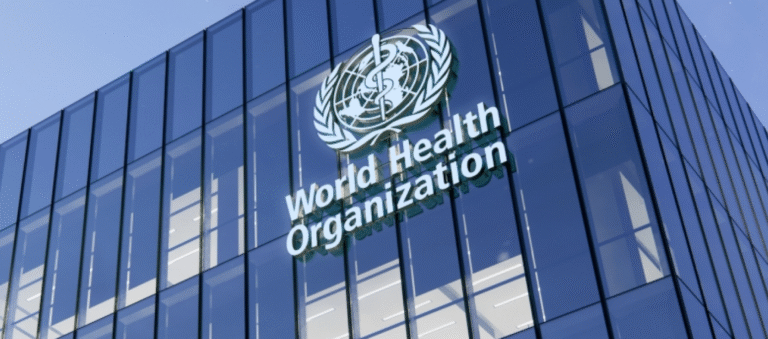
KANO, Nigeria – As Nigeria edges closer to the high-risk months for Lassa fever transmission, the bustling streets and markets of Kano thrum with life, largely unaware of the silent threat creeping beneath the noise of commerce and daily survival. While states like Ondo, Bauchi, and Edo account for more than 70 percent of all confirmed cases in 2025, public health officials in Kano are on alert — determined to prevent history from repeating itself.
Data from the Nigeria Centre for Disease Control and Prevention (NCDC) show that between January and September 2025, the country recorded 906 confirmed cases of Lassa fever and 168 deaths across 21 states, marking an 18.5 percent fatality rate — higher than the 16.9 percent recorded in 2024. Ondo alone contributes 33 per cent of all infections, making it the epicentre of the outbreak, followed by Bauchi with 23 per cent — the most affected state in Northern Nigeria.
In this report, Hussani Ibrahim Kafi, visited the heart of Kano’s public-health preparation, spoke with disease-response teams and underscored why preventing Lassa fever is now as much about behaviour and environment as it is about hospitals and medicine.
Assessing Preparedness: Inside Kano’s Health Facilities
At the Kano State Centre for Disease Control (KNCDC) headquarters along France Road, the Director-General, Dr. Muhammad Adamu Abbas, walked AHR correspondent through the Public Health Emergency Operations Centre (PHEOC), where a small team of epidemiologists monitored disease alerts and response data.
“We are not waiting for an outbreak,” Dr. Abbas told AHR. “The government has reactivated the PHEOC and strengthened surveillance at all primary and secondary health facilities. We’ve also sent alerts to all 44 local government areas to step up vigilance.”
He explained that the KNCDC has begun a state-wide campaign, urging residents to keep their homes and food storage areas free from rats — the major carriers of the Lassa virus — while health workers are being trained to identify early symptoms and report cases promptly.

To gauge preparedness, AHR visited three primary healthcare centres (PHCs): PHC Kofar Nasarawa, PHC Rijiyar Lemo, and PHC Unguwar Uku Kauyen-Alu. At each facility, health workers expressed concern about limited diagnostic equipment and public awareness.
At PHC Kofar Nasarawa, nurse Amina Bello revealed that many residents mistake Lassa fever for malaria.
“People come with high fever, weakness, and vomiting, but they first buy malaria drugs over the counter,” she said. “By the time they come here, it’s usually late. We keep telling them to report early, but awareness is still low.”
At PHC Rijiyar Lemo, community-health officer Haruna Aliyu noted:
“Our challenge is not the absence of information — it’s the lack of response. Many people don’t believe Lassa fever exists until someone close gets sick.”
Community Awareness: Markets Speak Volumes
At the bustling Yankaba Market, AHR observed heaps of grains and garri stored in open basins, easily accessible to rodents. Traders said they had heard of Lassa fever “on the radio” but dismissed it as a problem for other states.
“We don’t have such sickness here,” said Malam Sani, a rice dealer. “We just cover our goods with sacks. These rats have been here forever.”
A few stalls away, Zainab Abdullahi, who sells beans, acknowledged hearing a recent KNCDC jingle on Freedom Radio Kano, warning people to store food in rodent-proof containers.
“I’m now using plastic drums with lids,” she said. “It’s small, but it helps.”
Public health experts warn that complacency like Sani’s could make Kano vulnerable as the 2025/2026 Lassa fever season approaches.
The Data Story: Lassa Fever’s Growing Burden
NCDC records reviewed by AHR show that from 2023 to October 2025, Nigeria documented 2,467 confirmed Lassa fever cases and 438 deaths. Ondo, Bauchi, and Edo consistently topped the list, while states like Kano, Kaduna, and Sokoto remained on the lower end.
In Kano, official data indicate fewer than 30 confirmed cases since 2023, with three deaths recorded. However, health officials warn that underreporting is likely due to low testing capacity.
“We are scaling up sample collection and referral,” said Dr. Abbas, stressing that the KNCDC has partnered with the Aminu Kano Teaching Hospital (AKTH) to improve testing turnaround time.
Is There a Vaccine?
One of the recurring questions from residents across the three PHCs and markets visited was whether a vaccine for Lassa fever exists. Unfortunately, as AHR confirms, no approved vaccine is currently available.
According to NCDC and the World Health Organization, research is ongoing globally, but preventive measures — not vaccination — remain the mainstay of control.
“There’s no vaccine yet,” explained Dr. Aisha Musa, an epidemiologist at Bayero University Kano. “The most effective protection is prevention: keep food away from rats, maintain hygiene, and report fever symptoms early. Communities must take ownership of prevention, not wait for government campaigns alone.”
Dr. Musa emphasized that the virus, transmitted through exposure to rat urine or droppings, can also spread from person to person through body fluids — particularly in healthcare settings where infection control lapses occur.
Government and Public Response
The Kano State Government’s recent advisory, signed by Dr. Abbas on October 13, 2025, urged residents to remain alert, practice proper sanitation, and avoid contact with rodents. It also directed hospitals and clinics to activate infection prevention and control (IPC) measures, particularly during the dry season.
“Kano’s dense population and food storage practices make it vulnerable,” the advisory warned. “But the disease is preventable and treatable if detected early.”

The government has also launched a joint awareness drive with local radio stations and community leaders, focusing on market women, grain sellers, and food vendors. Posters in Hausa and English are now visible in selected PHCs and bus stations, highlighting symptoms such as fever, sore throat, and bleeding gums — and urging prompt reporting.
The Human Angle: Fighting an Invisible Enemy
For many low-income families in Kano, where poverty and poor sanitation intersect, the Lassa fever threat feels distant — until it strikes.
At PHC Unguwar Uku Kauyen-Alu, community health extension worker Maryam Isa recounted a case from 2024 involving a young trader who died after being referred too late to a tertiary facility.“He thought it was malaria,” she said softly. “By the time his family brought him, it was too late. That’s why we are worried. Awareness is everything.”
In the same area, AHR met Imam Shariff Ghali, who uses Friday sermons to preach cleanliness and disease prevention.“Our religion teaches us to be clean,” he said. “If people keep their homes and food safe, we can stop this sickness before it begins.”
A Race Against Time
As the 2025/2026 Lassa-fever season looms, Kano’s battle rests on a delicate balance — between official preparedness and public behaviour. While the reactivated PHEOC and mass-media campaigns mark a proactive turn, real progress will depend on whether residents internalise the message.
“Lassa fever control is not just a medical issue — it’s a community issue. Everyone has a role to play,” says Dr Musa.
Until a vaccine becomes available, prevention remains the most potent defence. For Kano — a city of over 15 million people — that means every home, market stall and clinic must remain alert and rodent-free. Because when it comes to Lassa fever, silence is never safe.




